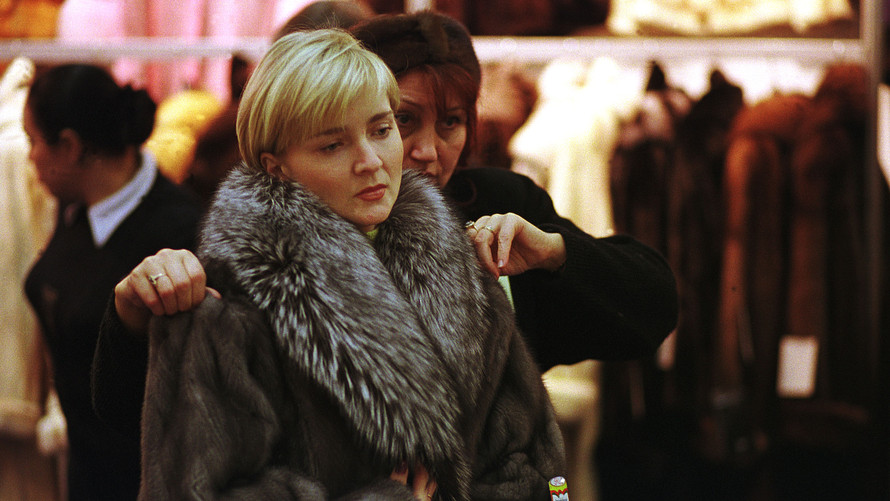
Designers including Rebecca Minkoff, Narciso Rodriguez and Michael Kors say they’re worried
The finer things in life are the latest victims of escalating trade tensions between the U.S. and China.
The latest round of tariffs on $200 billion worth of Chinese-made goods affects mink furs, reptile skin handbags, leather accessories, silk, handmade lace, gold leaf, and fabrics used specifically for ballet, opera and theater sets. They’re among the roughly 5,000 products subject to a 10% tariff that went into effect in late September; it will increase to 25% in January.
President Donald Trump says the tariffs — which make it more expensive for Chinese-made goods to enter the U.S. — are necessary to protect American manufacturing and jobs.
But business groups say they’ll do the opposite, arguing that tariffs “hurt the heartland” and burden working families with higher prices on consumer goods.
Some also worry they’ll affect well-heeled shoppers on Fifth Avenue and Rodeo Drive. “While there’s the perception among many that the luxury shopper has a little more flexibility in what they’re going to pay, when you get to 25% tariffs, that obviously is going to have an impact on sales and consumer behavior,” Julia Hughes, president of the U.S. Fashion Industry Association, told MarketWatch.
Fur garments made in China and sold in the U.S. are subject to both import and export tariffs, said Michael Whelan, executive director of Fur Commission USA, a group representing American mink farmers. Retail prices for mink coats in the U.S., which can sell for $20,000, could soar by as much as 45%.
Prices will also go up for Chinese shoppers, Whelan said. That’s bad news for American mink farmers: 80% of their market is now Chinese consumers. (Chinese luxury consumers account for almost one-third of the global luxury market, spending $7.4 billion annually, according to a 2017 report by McKinsey.)
“We can spend 40 years battling the animal rights propaganda machine and in one swoop of a pen the president we’ve supported all this time can go out and destroy our industry,” Whelan said, noting that most mink farmers are politically conservative.
‘We can spend 40 years battling the animal rights propaganda machine and in one swoop of a pen the president we’ve supported all this time can go out and destroy our industry.’
Michael Whelan, executive director of Fur Commission USA
Any price hikes as a result of the tariffs probably wouldn’t happen until the middle of 2019. But retailers are already concerned. Many “iconic” fashion brands and retailers rely on Chinese factories to make parts of their products, the USFIA said in a recent letter to the U.S. Trade Representative. Tariffs will affect all income levels, from struggling single parents to “consumers of high-end fashion,” the group said.
Designer Rebecca Minkoff — whose purses, backpacks and duffels range from $95 to $550 — testified against the tariffs at a congressional hearing. “It would not be an exaggeration to say that these tariffs pose an existential threat to our business,” the company’s lawyers said in a letter to the Trump administration.
Michael Kors, KORS, +0.41% J. Crew, Derek Lam, Narciso Rodriguez and dozens of other well-known labels signed a separate letter opposing tariffs that the American Apparel & Footwear Association submitted to the U.S. Trade Representative.
And because their products sell at higher prices, the impact of tariff-related price increases will be more noticeable to consumers, said Steve Lamar, executive vice president of the American Apparel & Footwear Association. A 25% tariff on a $20 purse adds $5 or $50 to a $200 purse, he explained. Even wealthier shoppers might balk at those kind of price hikes. “Luxury consumers want value, they don’t want to pay for the luxury of paying Uncle Sam,” Lamar said.
But steeper prices on fancy products will also affect shoppers of modest means who want to look like they can afford better.
The latest tariff list includes leather “flat goods” — items like key holders and wallets. Those smaller accessories can be a way for fans of a high-end brands to get the logo without paying for a big-ticket item, Hughes said. “I have a Ferragamo wallet, but I don’t have the $6,000 purse,” she said.
Leather coats are another example. Pigskin versions look just like much more expensive cow or lambskin ones, said Cynthia Gardenhire, vice president of Synplus, Inc. Her company makes full-length pigskin leather coats that sell for $79 to $199, while cowhide versions can sell for $1,900.
Prices on Synplus’s products will be affected by the recent 10% tariff — and a 25% tariff could be disastrous for her company and customers: “10% is damaging, 25% would eliminate that product from the market and take that choice away from that middle-income customer, and I don’t think that’s fair,” Gardenhire said.


